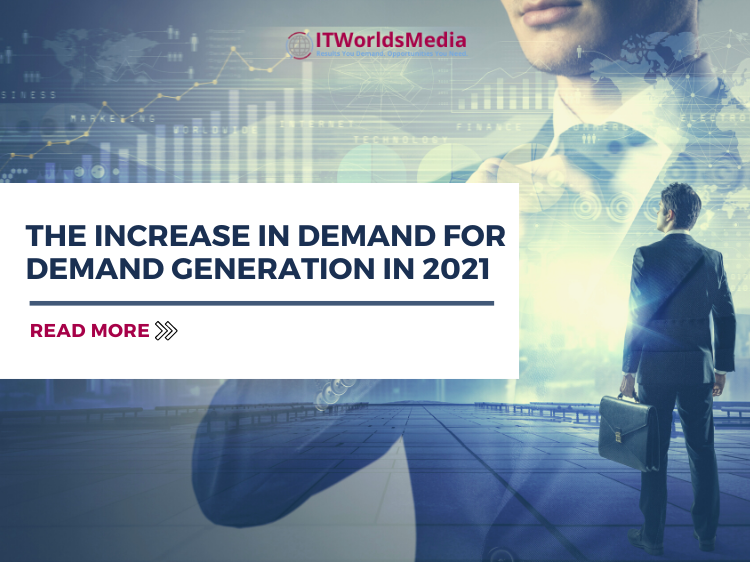 2021-05-27
2021-05-27
The Increase in Demand for Demand Generation in 2021
The b2b terrain is tough, complex and full of competitors vying for leads. It’s sure not an easy road and with new players constantly entering the market, the competition is only increasing. However, the good news is that B2B marketers can respond to this hassle by leveraging demand generation.
Here’s all you need to know about utilizing demand generation to increase sales.
The Critical Aspects of Demand Generation
The B2B marketplace is filled with opportunities, but the decision-making process isn’t the same anymore. B2B buyers are becoming increasingly independent when it comes to conducting research and making purchase decisions.
Thus, B2B marketers need to go beyond generating top-of-funnel leads. They need come out as thought leaders with subject matter expertise to build fruitful business relationships for success. In a nutshell, they need to create and manage demand instead of just focusing on getting more leads.
Three key aspects of demand generation every B2B marketing professional should know are as follows-
- Persona Development: Thoroughly understanding your potential customers is the first step in any demand generation strategy. B2B marketers need to ensure that they have a clear understanding of the qualities and characteristics of their customer base.
- Build Content Assets: Creating content isn’t enough. You need to develop content that can be used as a valuable asset to answers all your consumers’ questions. In fact, providing a resource hub with nurturing content can highly increase the lead to pipeline ratio.
- Performance Measurement: Measuring the success of demand generation is critical, but it can be difficult. Once you’ve deployed your demand generation strategy, keep on monitoring its performance.
How is demand gen different from lead generation?
Demand generation and lead generation are two disparate concepts that can be slightly confusing, as the end goal of both strategies is to generate leads and drive sales.
However, the approach and objectives are different.
The focus of demand generation is to create awareness and demand for your brand’s service or product. It aims to drive new prospects to your business and introduce them to your offerings and how you can help them achieve their goals. In a nutshell, you are creating new demand for your product/service.
On the other hand, lead generation revolves around turning potential customers into qualified leads. It’s usually a later step in demand generation, where the user is aware of your product and its benefits but isn’t yet interested in buying. Lead generation is all about making the user interested in buying from you.
Simply put, demand generation is creating new demand for your product or service. Lead generation is a subset of demand generation that focuses on making the prospects interested in purchasing that product/service.
Why 2021 Is All About Focusing More On-Demand Generation?
Lead generation can lead to quick sales and revenue. But lead generation will only work if there’s a demand for your product or service in the market. If not, you’ll need to create the demand, and that’s where demand generation comes into play.
In this hyper-competitive and saturated marketplace, generating leads can be competitive as multiple brands are competing for customers’ attention.
Conclusion-
As lead generation becomes more difficult, brands are readily implementing demand generation strategies. By leveraging demand generation strategies, you can increase brand awareness, establish thought leadership, and facilitate lead generation. In 2021, B2B sellers need to supercharge their marketing strategies by implementing proven demand generation techniques.
